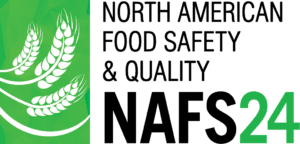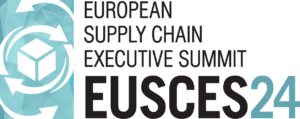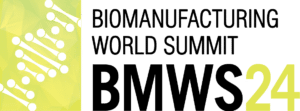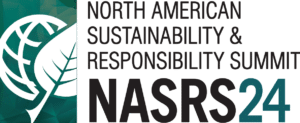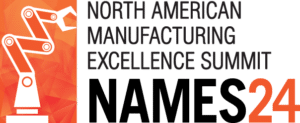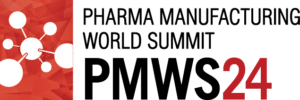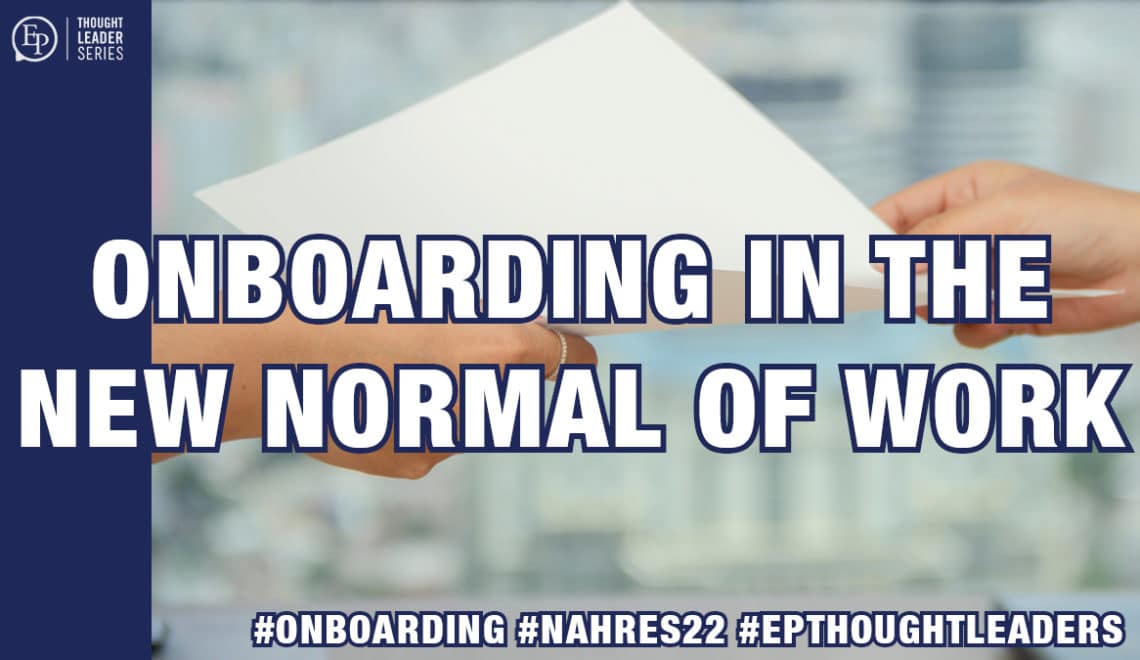
While the wave of workplace turnover popularly called “The Great Resignation” still rolls on with no sign of cresting, it is important to remember that most of those people submitting their notices are also starting new jobs somewhere too.
What does onboarding look like in the “New Normal” of work, particularly at the kind of forward-thinking employer who is attracting new employees who have decided to leave their old positions and applied for something more aligned with what is important to them?
As you might imagine, onboarding involves a little more than introducing the new team member around the office and making sure they know where the restrooms are, especially in what may well be a hybrid or remote work environment. Let’s review the basics and explore some ideas to make onboarding better.
What is Onboarding?
Every organization does onboarding, whether they call it onboarding or not. Onboarding is about introducing a newly hired employee to the company so that they understand their role, integrate well with the existing team, learn how to find the resources they need to succeed, become comfortable in their daily work, and soon begin contributing to shared goals and objectives.
How Long Does Onboarding Take?
Of course there is no one-size-fits-all right answer to that question. Some organizations have no formal structure at all, and others have detailed plans for a two-week, 90-day, or even year-long series of onboarding activities. While the answer may vary from company to company or even individual to individual, the important thing is that it supports the new hire until they are an integrated and effective member of the team.
Where Does Onboarding Start, and What Does It Look Like?
An argument can be made that in a way onboarding begins even during the recruitment process as applicants are told what their potential employer wants and needs from the successful candidate, but for the sake of getting into some specifics we should discuss what happens after someone has accepted a job offer. Do they just show up sometime on the morning of their first day and hope for the best? No, they almost certainly received some important information in a welcome email and/or through conversation with their future employer. Here’s a quick checklist of what should be covered:
- Where and when are they expected to be on their first day of employment.
- The name of who they will first be meeting.
- A list of any documents or information they may need to bring in to complete first-day paperwork.
- Some information about dress code.
If the new employee is coming into a shared office environment, it is often a nice gesture for their future direct-report manager to invite them to lunch, which is an offer that should be discussed ahead of time.
Of course onboarding is not all about the new hire. The existing team should also get some information communicated to them before their new member’s first day:
- What is the new employee’s name, job title, and how are they fitting into the current organization?
- When is the new person starting, and where will they be working? This last detail has a lot more potential answers than it used to as we move into an environment where hybrid/Work-From-Home/Work-From-Anywhere becomes much more common.
- Some brief introductory information about the person to give context to why they will be a good fit that perhaps also offers icebreaking conversation starters.
Again, if the new employee is coming into a shared workspace, many employers set up some kind of welcome activity, which may even include a team lunch to allow people to engage a little beyond the usual quick wave of first introductions.
What Should the First Day Include?
There is no ironclad rule, but ideally a new employee’s first day should include meeting the people they are going to work with on a daily basis, meeting their direct-report manager and perhaps some of the senior leadership above that manager, meeting with HR to get the first-day paperwork squared away, and some time to begin familiarizing with where and how the daily tasks will be done.
Many companies assign an established employee to help the new employee get up to speed, and ideally this should include both one-on-one training and job shadowing with the possibility of an ongoing mentor-mentee working relationship. Especially in large organizations, having someone to ask for guidance who is not the direct-report supervisor can be an incredible asset to a new employee looking to find their feet without fear of looking ineffective to their boss.
A successful first day of onboarding should end without the new hire feeling overwhelmed. Too much information too quickly is not productive, nor is being metaphorically thrown into the deep-end to see whether the new person can swim. A great first day should also include everyone on the team having spent enough time with the new addition to their group to have formed at least a strong first impression.
What Should the First Week Include?
As stated earlier, there are organizations that have well-structured and scheduled onboarding procedures and processes, and others that work on a case-by-case basis. Whichever approach is used, hopefully the new hire spends the first week engaging in regular meetings with both peers and management, becomes familiar with the hardware and software relevant to their role, growing accustomed to workflow, and beginning to take on the tasks they have been hired to do.
Beyond that? The difference between ‘just’ onboarding and ‘great’ onboarding is about treating the new employee as a knowable individual who is looking to succeed and who the team actively wants to incorporate into their working collective. Why did the new hire want the job in the first place? What are they good at and proud of and interested in? What matters to them in their working life and in their career? What about their personal life are they willing to discuss in the workplace? How do they like to learn? How do they like to communicate? How do they like to work? What kind of training, skills, and opportunities are they interested in for their future? By the end of the first week a lot of these questions should have answers. The new hire should feel both heard and welcomed, and the new hire’s peers and manager should have a good sense of how the new addition to their working life will fit moving forward.
What Happens Next?
The first answer is ongoing training and team-building until the new employee no longer feels like the new employee. How long that takes is a moving target, but onboarding should never be considered over until that crucial status is achieved.
The next important thing to do is self-reflect on the onboarding process in order to improve. Make employee engagement part of how peers and managers interact with the new employee, and make, “What do you think about the onboarding process so far?” part of that engagement. The answers you get back will help you onboard even better in the future, with all the good things that does for employee happiness, productivity, and talent retention.
So What Has Actually Changed About Onboarding in the New Normal of Work?
Reading this far, it has probably occurred to you that most of this sounds pretty familiar. COVID-19 did not make existing onboarding ideas outdated. There were hybrid and remote jobs before the global pandemic, and there will be in-office jobs after the pandemic. Probably the biggest thing that has changed is that more of an emphasis is being placed on making the new employee fit the way they want to fit, which is about asking them their preferences and then working to accommodate their answers.
The Great Resignation is all about people changing jobs looking for something better as they define better, so employers looking to recruit and retain top talent must work hard to understand what that means. Onboarding is the definitive time to make that effort and establish how team members can effectively communicate their wants and needs moving forward.
For the foreseeable future the job market is going to be populated by job seekers who have chosen to enter the job market and intend in many respects to interview their next employer rather than the other way around. Onboarding is a company’s opportunity to both integrate in the new hire into the organization and also make a lasting first impression that assures the person joining the team that they made the right decision.
Onboarding is part of talent attraction, part of talent recruitment, part of talent development, and part of talent retention.
Put some thought into it. Freshen up your best practices. Ask the team for input about how to make it better. In the race for talent, the onboarding experience can be the difference between being an employer of choice and the employer who struggles to find and hold onto the people needed to succeed.
—

Geoff Micks
Head of Content & Research
Executive Platforms
Geoff joined the industry events business as a conference producer in 2010 after four years working in print media. He has researched, planned, organized, run, and contributed to more than a hundred events across North America and Europe for senior leaders, with special emphasis on the energy, mining, manufacturing, maintenance, supply chain, human resources, pharmaceutical, food and beverage, finance, and sustainability sectors. As part of his role as Head of Content & Research, Geoff hosts Executive Platforms’ bluEPrint Podcast series as well as a weekly blog focusing on issues relevant to Executive Platforms’ network of business leaders.
Geoff is the author of five works of historical fiction: Inca, Zulu, Beginning, Middle, and End. The New York Times and National Public Radio have interviewed him about his writing, and he wrote and narrated an animated short for Vice Media that appeared on HBO. He has a BA Honours with High Distinction from the University of Toronto specializing in Journalism with a Double Minor in History and Classical Studies, as well as Diploma in Journalism from Centennial College.


